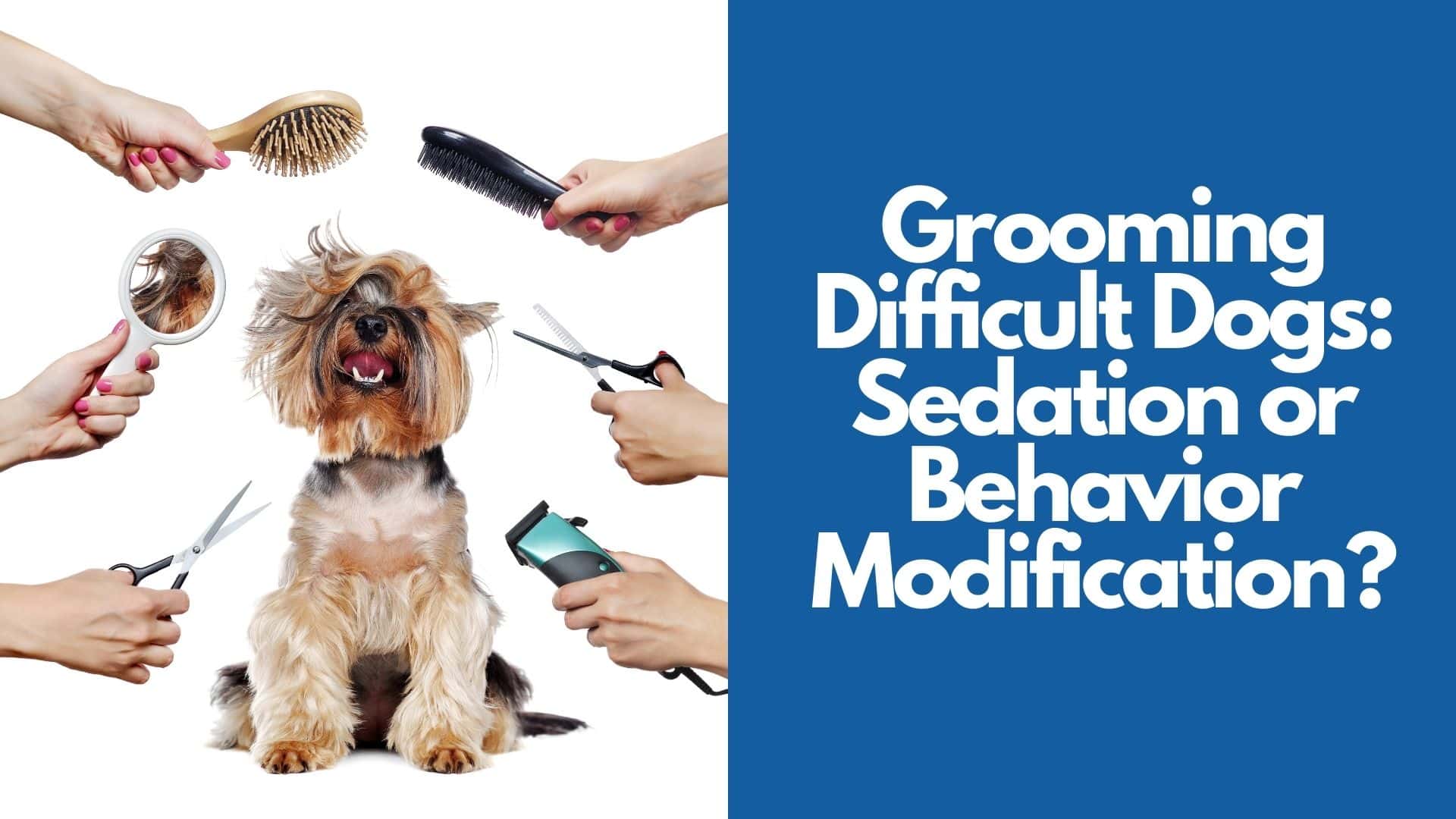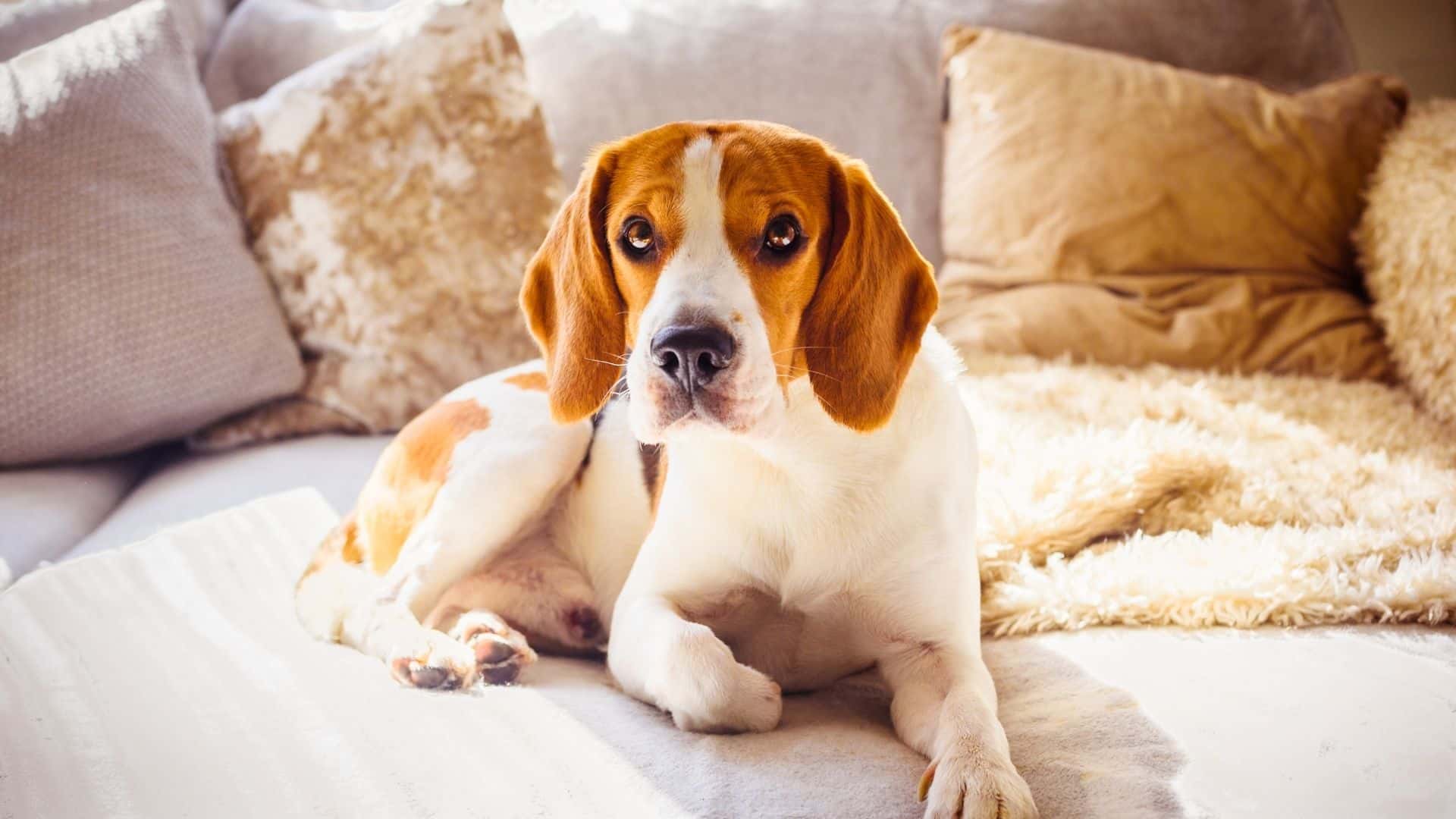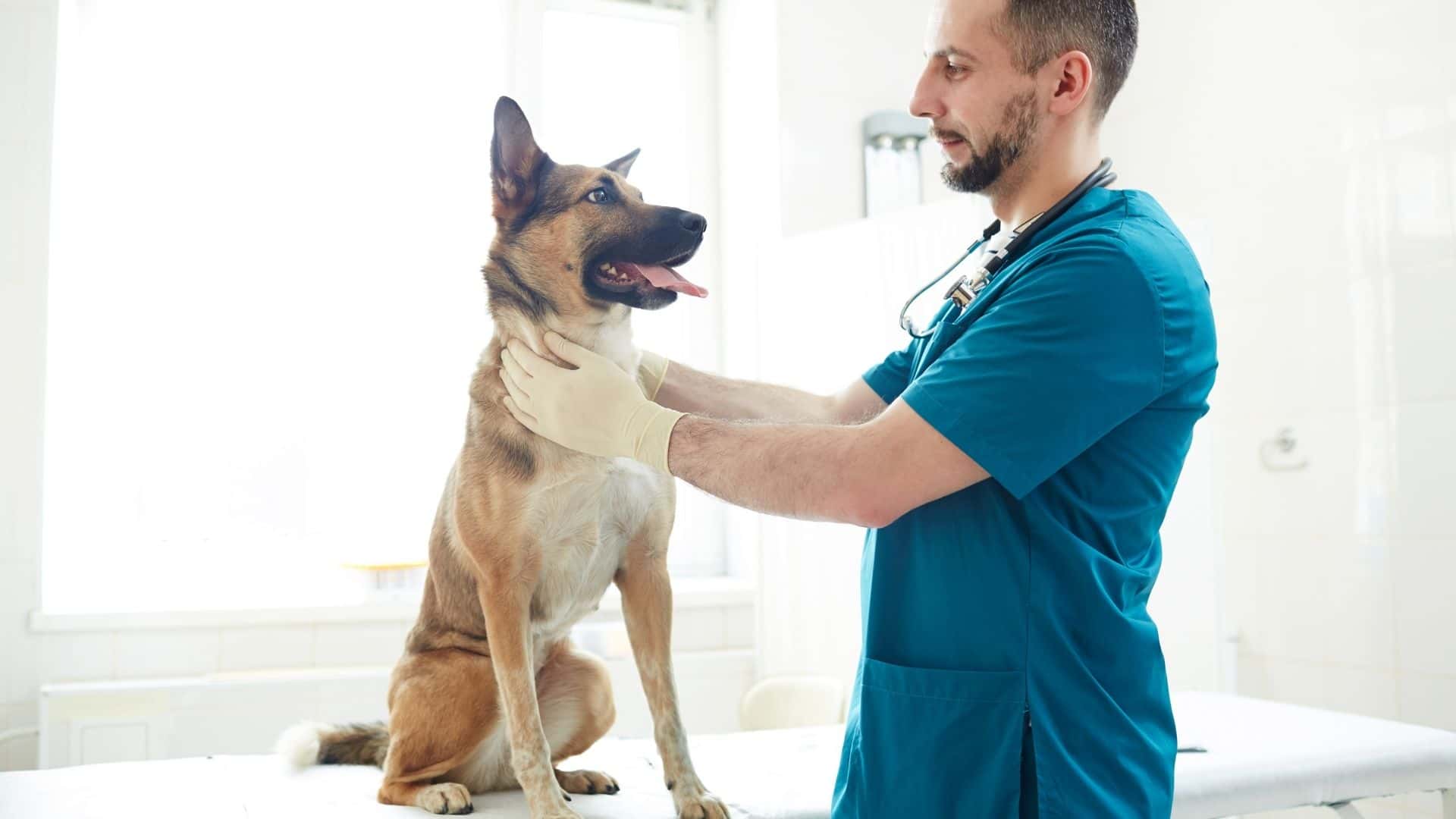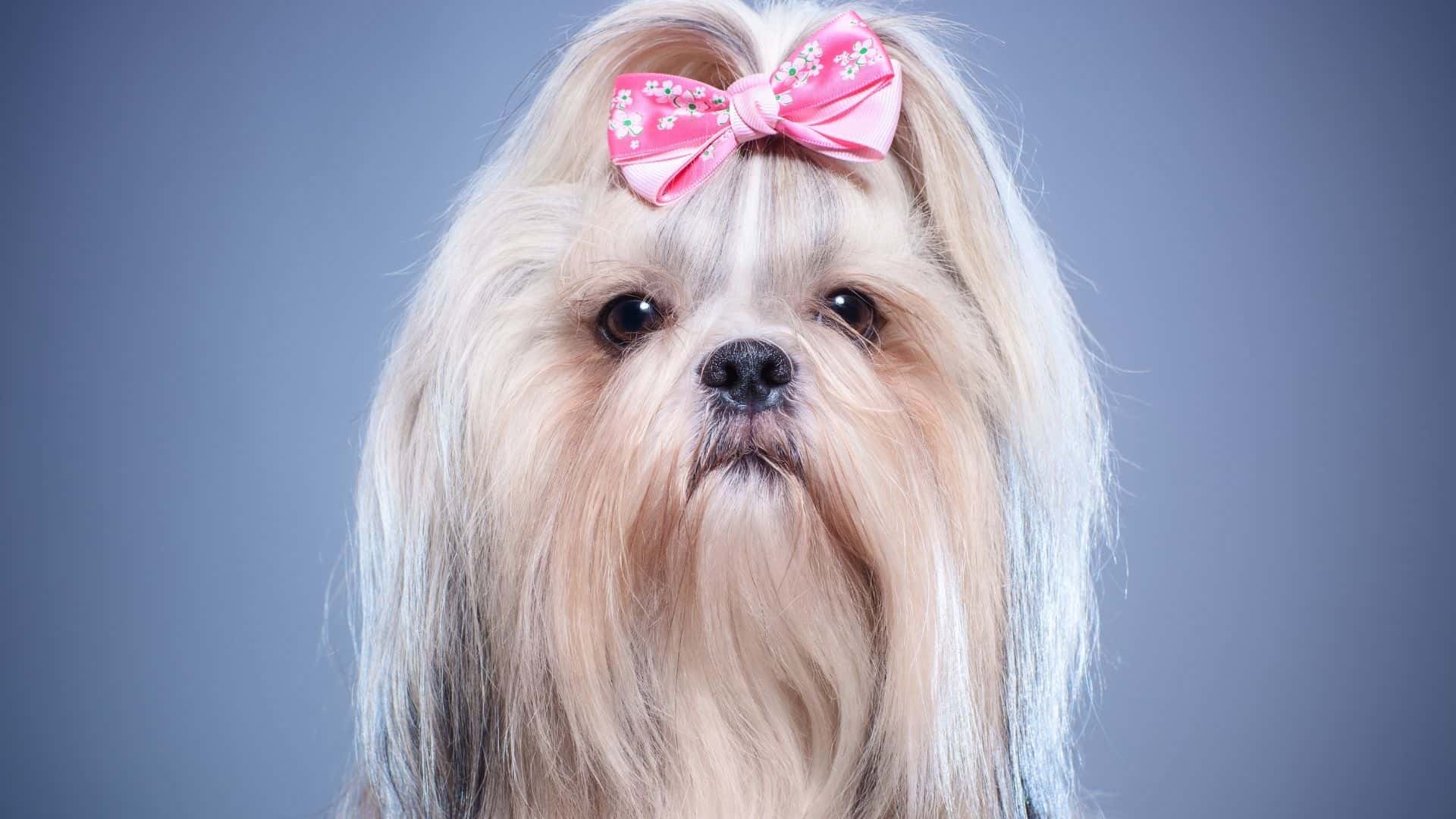Your dog is sitting completely still, allowing you to flip him and flop him in any way necessary to complete the task of trimming his fur and trimming his toes. In reality, most dogs will wiggle, bark, whimper, and try to flee during a haircut, making this a fiction. By reading this guide, you will be able to know, How to Do Grooming a Dog Under Sedation?
Going to the groomer’s can be stressful for your dog, and after he gets out of the car, the strange sounds and smells might make things even worse.
Many individuals use dog tranquillizer pills as a dog sedative during grooming in order to reduce their pet’s stress level throughout the process. This manner, they can try to do the grooming at home and see if it works.
If you’re not a veterinarian, don’t use dog tranquillizer tablets to put your pet to sleep. It is possible to utilise natural pet sedatives and over the counter drugs such as Benadryl under supervision to calm your pet down.

Is it necessary to sedate a dog in order to do a grooming procedure?
It’s one of the things we enjoy most about dogs that they’re naturally happy and playful. However, much like humans, dogs can be afraid, anxious, and apprehensive.
Natural cures, sedatives, and training/behavior modification are a few options for dogs who are stressed or afraid.
Some dogs don’t need sedatives for the rest of their lives. Others have long-term anxiety concerns, including separation anxiety, that can have a significant impact on their safety and quality of life. Between the two extremes, many puppies are in between.
Some situations, like going to the vet or welcoming a new pet into the family, warrant an acceptable level of concern. Dogs might also become anxious during travel, grooming, toenail trimmings and even during storms.
Sedation may be helpful if a dog’s anxiety is severe or persistent to the extent that it threatens his or her well-being or safety.
While grooming your dog, you may wonder whether there are any sedatives you can give him to help him relax. Because of the variety of alternatives, considerable consideration is required before making a decision. Before administering sedatives to complete the grooming process, the groomer should ask the pet owner the following questions:
Is your dog constantly on edge?
Grooming your dog at home is an option. As long as you’re not a stranger, some dogs are less frightened in your presence and more comfortable being petted by you.
Do you have a dog that requires constant grooming?
When was the last time you had your dog groomed?
To use sedatives, it is generally recommended to use them only when all other options have been explored, when the dog is suffering from intense fear and is exceedingly agitated, and when there is a possibility of defensive biting.
For grooming, what dogs require sedatives?
As a dog owner, you may wonder if there are any sedatives you may administer to your pet while he is being groomed. Many factors must be considered before making this decision, as there are a number of alternatives. Before requesting sedatives from your veterinarian, you should ask yourself these questions:
Is this your dog’s first time behaving in this manner? Perhaps it is time to take a closer look at what might have transpired. Is your dog’s irritability due to an ear infection or any other type of pain? Is this your first time with a new groomer?
Are there any other groomers you’ve tried? Occasionally, a different groomer may be more patient or have other ideas to assist your dog’s grooming session run more smoothly.
Grooming your dog at home is an option. As long as you’re not a stranger, some dogs are less frightened in your presence and more comfortable being petted by you.
What dog sedatives can be used for grooming?

A veterinarian or veterinary behaviourist will need to be consulted if the groomer has exhausted all other possibilities and concludes that the dog needs sedatives.
Benadryl
An over-the-counter antihistamine, Benadryl is a popular choice. For anxiety, this drug’s use is predicated on its capacity to induce sedation and drowsiness. With this medicine, many dogs appear calmer and their owners notice a change in their behaviour. In spite of its apparent effects on lethargy, this drug’s effects are not strong enough to completely alleviate the fear of many resolute dogs.
General anesthesia
Grooming may need the use of general anaesthesia if the dog is in a serious condition. At the vet’s office of course, this can be done. In circumstances where a dog is a nuisance or if it is in discomfort or if it is required to remain still for a long period of time, this may be necessary. Painful mats may be better served by being submerged in water rather than being made to remain stationary and in agony for a long period of time.
Melatonin
Melatonin may be prescribed by certain veterinarians as an additional treatment option. Additionally, this drug can be purchased over the counter and has mild sedative properties. As with Benadryl, it may not be effective in cases of extreme anxiety.
Trazodone
Trazodone is a tranquillizer and an anti-anxiety medication for dogs. Grooming, veterinarian appointments, thunderstorms/fireworks, and other short-term stressful situations can benefit from this sedative.
Patients with certain medical issues may choose to use trazodone with caution or avoid using it at all.
Acepromazine
If Benadryl or melatonin don’t work, some vets offer Acepromazine as a third option for treating insomnia. This is a considerably stronger medicine, but it comes with a greater risk of side effects as a result. Taking this medicine may result in the reverse of what it is intended to do, which is known as a paradoxical effect. Your dog may grow agitated and even hostile if you use this method!
Gabapentin
In addition to seizure control, anxiety alleviation, and drowsiness, gabapentin can also be used to alleviate pain. Short-term events like grooming, travel, vet appointments, and so on are popular uses for this sedative.
If your pet is otherwise healthy, gabapentin is generally regarded safe, with very few negative effects.
12 things to know or do before taking your dog to groomer
When it comes to pet salons, some dogs are thrilled to be there, while others are terrified. Dogs are treated to a relaxing and enjoyable experience in a high-quality grooming service. It’s understandable for a dog to feel apprehensive about even this luxurious experience.
The clippers and blow dryers make a lot of noise in a pet salon. Even if dogs are kept apart, they can grow frightened of other dogs that are being groomed nearby. Grooming can be a stressful experience for a dog that is afraid of new things. It’s possible for dogs to suffer a full-blown panic attack if they aren’t fully used to the new environment.
To ensure a great grooming experience for your dog, follow these twelve simple steps.
1. Calming aids
The purpose of calming aids is to ease your dog’s anxiety so that he may begin to learn. “Thundershirt” is a relaxing aid that is frequently prescribed.
2. Relaxing chews
Products like “Dog Composure” by VetriScience, an over the counter relaxing chew, are also available. Some dog owners say that taking these medications has calmed their pet. While they may not benefit your dog at the groomer’s, they are good to try while you are training your dog to appreciate grooming in the comfort of your own home. In a moment, we’ll go over the procedure.
3. Massage is the third step
When a dog visits a groomer, a professional will clean all of the dog’s body parts, including the most delicate ones. A thorough examination of the dog’s ears, groyne, paws, and glands is required.
You can do this by giving your dog a full-body massage to prepare him or her. From head to toe, stroke your dog’s body with care. Take her paws and spread her toes apart as you play. You can play with her ears and scratch her buttocks. It is essential that your dog feels comfortable being handled before you attempt any training.
4. Anxiousness
Your dog’s anxiety level is likely to be too high for medications to help (try taking Benadryl if you’re afraid of heights; it won’t help). Your dog’s level of anxiousness indicates that he or she has crossed the threshold. As a result, he may get agitated, panting, unable to accept treats, and contemplating leaving or fighting (biting). Your dog may have crossed the point of no return.
5. Supplies, Brushing, and Bathing
Make sure you can safely bathe your dog at home before doing this. Brushing your dog on a daily basis is helpful for them as well. To help them adapt, expose them to a wide range of sights and noises. After turning on a hairdryer, reward her with a sweet treat. Give her a treat and hold up a set of nail clippers next to her paws without cutting.
6. Health concerns
Please inform our groomers of any health and/or behavioural concerns your dog may have, such as lumps, bumps, scratches, scrapes, previous surgeries/injuries, arthritis, breathing issues, heart conditions, disabilities, anxieties, places your dog doesn’t like to be touched, and things your dog might react negatively to.
Your dog’s coat and skin will benefit from a selection of shampoos we use during the grooming process. You should let us know if your dog has any skin or coat issues that you’d like us to take care of, including allergies.
7. Afraid dog
Learning is impossible when a dog is above its threshold. It is impossible for your dog to tolerate grooming if he is afraid of it. Many dogs have to rely on medicines for grooming for the rest of their lives because of this vicious cycle. When a dog is afraid, his brain is flooded with the hormones norepinephrine, epinephrine, and cortisol, which are all forms of adrenaline.
8. Keep the sessions short and sweet
Short and sweet sessions are preferable for many dogs than extended ones. As a result, begin with short sessions (no longer than 2-3 minutes for the first few days) and work your way up to longer ones.
9. Reward your dog
Give your dog a delectable high-value treat every time he sees or sniffs the brush. To avoid overfeeding your dog, look for small, bite-sized treats. After that, put the brush back in your pocket and stop feeding it rewards.
Treats are only given if you show off your brush in a way that entices your dog. For a few days, repeat this multiple times a day. If you stick with it for a few days, your dog may start drooling or licking the brush as a hint that rewards are on their way!
10. A training trip
Once you and your dog have found a groomer you both like, see if you can set up a training session with them. You and your dog can go for a stroll together during this session to assist them get used to the new surroundings. Grooming tables are available for your dog to practice standing on, so he or she can get accustomed to the noise of clippers and blow dryers.
This is a chance for your dog to get acquainted with the groomer. They will spend time getting to know your dog and making her feel at ease during the grooming process. A groomer can help calm her nerves during this time.
11. Be patient and easy-going about it
Gradually introduce a new environment to your dog. You may only need a bath and a brush after a workout session. When your groomer comes back, have him or her do an ear cleaning and nail clipping next time. It is possible to have a full grooming session completed in one appointment with your dog’s groomer. Every time your dog does anything good, you reward him with a tasty treat and lots of words of affirmation. Dogs get less frightened and associate the groomers with a more pleasant experience with time.
12. OTC tranquilizers
As long as you know what you’re doing, you can safely administer over-the-counter human tranquillizers to your dog for car travel or grooming. If you’re not using medication that’s been prescribed for your dog’s age, weight, and overall health, it’s easy to under- or over-dose him.
Diphenhydramine, a component in Benadryl, might be an option. A moderate tranquillizer and antihistamine, diphenhydramine is commonly used to treat allergies in both people and dogs. A veterinarian should be consulted prior to administering any type of sedative or tranquillizer.
Watch What is a safe sedative for dogs? | Video
Which sedative is best for a dog?
What kind of sedatives are used to help dogs fall asleep?
The most widely administered canine sedative is acepromazine. Dopamine receptors in the brain are blocked, lowering various brain activities as a result of the phenothiazine class sedative.
Veterinarians sedate animals with what?
The majority of anaesthetic drugs used in human health are also employed in veterinary medicine. Xylazine, romifidine, detomidine, and medetomidine are commonly utilised in veterinary species (especially large animals), but they are rarely used in humans due to their high toxicity.
How can I securely provide sedatives to my dog in the privacy of my own residence?
Complementary therapies such as L-theanine, melatonin, Zylkene (hydrolyzed lactose protein), or other dog-specific calming substances Pet owners can use DAP (dog appeasement pheromone) products, which have been proven to help calm dogs. A swaddling blanket, such as a Thundershirt or other body wrap, that mimics swaddling.
Ø Please advise me on what I may offer my dog to help him fall asleep.
Here are some of the most regularly prescribed dog tranquillizers.
1. Benadryl.
2. Acepromazine.
3. Gabapentin.
4. Trazodone,
Anxiety-relieving medications such as Valium are commonly prescribed to people with anxiety disorders.
Anxiolytics for Chronic Anxiety.
Sedation through injection.
How are groomers able to handle dogs that are difficult?
Groomers typically have muzzles on available for the most aggressive dogs…. Aggressive dogs are confined with a loop. In order to avoid accidently cutting a dog, groomers move rapidly to shear the animal. The groomer may cut your dog’s nails after the clippers are put away.
Conclusion

If you get a puppy, you may want to start grooming her as soon as possible to get her used to it. Grooming your dog doesn’t have to be as stressful if you don’t use a sedative.
Try to establish a good link with grooming by brushing your puppy briefly and rewarding him with play or treats afterward. Be sure to handle your puppy’s paws and lips throughout the grooming sessions so that she becomes acclimated to nail trims and teeth brushing as well.
Bottom up
Please comment below about your ideas and share this “Grooming Difficult Dogs: Sedation or Behavior Modification?” article with your friends.
Stay tuned with our website to find out more exciting stuff. Don’t forget to check out our previous articles too.
Until the, Read about, Can Dogs Eat Prime Rib Bones? | Dog Safety Guide





